
The Aermacchi or Macchi MB-326 is a light military jet trainer designed and produced by the Italian aircraft manufacter Aermacchi. It is one of the most commercially successful aircraft of its type, being bought by more than 10 countries and produced under licence in Australia, Brazil and South Africa.

The English Electric Canberra is a British first-generation, jet-powered medium bomber. It was developed by English Electric during the mid- to late 1940s in response to a 1944 Air Ministry requirement for a successor to the wartime de Havilland Mosquito fast bomber. Among the performance requirements for the type was an outstanding high-altitude bombing capability and high speed. These were partly accomplished by making use of newly developed jet-propulsion technology. When the Canberra was introduced to service with the Royal Air Force (RAF), the type's first operator, in May 1951, it became the service's first jet-powered bomber.
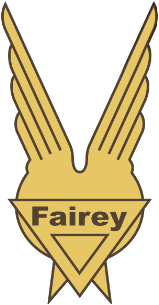
The Fairey Aviation Company Limited was a British aircraft manufacturer of the first half of the 20th century based in Hayes in Middlesex and Heaton Chapel and RAF Ringway in Cheshire that designed important military aircraft, including the Fairey III family, the Swordfish, Firefly, and Gannet. It had a strong presence in the supply of naval aircraft, and also built bombers for the RAF.

The Avro Anson is a British twin-engine, multi-role aircraft built by the aircraft manufacturer Avro. Large numbers of the type served in a variety of roles for the Royal Air Force (RAF), Fleet Air Arm (FAA), Royal Canadian Air Force (RCAF), Royal Australian Air Force and numerous other air forces before, during, and after the Second World War.

The Bristol Bloodhound is a British ramjet powered surface-to-air missile developed during the 1950s. It served as the UK's main air defence weapon into the 1990s and was in large-scale service with the Royal Air Force (RAF) and the forces of four other countries.

The BAC Jet Provost is a British jet trainer aircraft that was in use with the Royal Air Force (RAF) from 1955 to 1993. It was originally developed by Hunting Percival from the earlier piston engine-powered Percival Provost basic trainer, and later produced by the British Aircraft Corporation (BAC). In addition to the multiple RAF orders, the Jet Provost, sometimes with light armament, was exported to many air forces worldwide. The design was also further developed into a more heavily armed ground attack variant under the name BAC Strikemaster.

The Bristol Type 171 Sycamore is an early helicopter developed and built by the helicopter division of the Bristol Aeroplane Company. The name refers to the seeds of the sycamore tree, Acer pseudoplatanus, which fall with a rotating motion. It has the distinction of being the first British helicopter to receive a certificate of airworthiness, as well as being the first British-designed helicopter to be introduced by and to serve with the Royal Air Force (RAF).

The Armstrong Siddeley Viper is a British turbojet engine developed and produced by Armstrong Siddeley and then by its successor companies Bristol Siddeley and Rolls-Royce Limited. It entered service in 1953 and remained in use with the Royal Air Force, powering its Dominie T1 navigation training aircraft until January 2011.
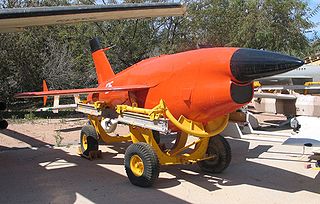
A target drone is an unmanned aerial vehicle, generally remote controlled, usually used in the training of anti-aircraft crews.

The Armstrong Siddeley ASA.1 Adder was an early British turbojet engine developed by the Armstrong Siddeley company and first run in November 1948.

The Avro Cadet is a single-engined British biplane trainer designed and built by Avro in the 1930s as a smaller development of the Avro Tutor for civil use.
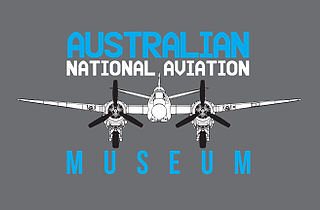
The Moorabbin Air Museum is an aviation museum at Moorabbin Airport in Melbourne, Victoria, Australia. It was founded in 1962 as the Australian Aircraft Restoration Group, in an attempt to maintain a World War II-era Bristol Beaufighter aircraft. It has since become a museum, with a large aircraft collection. It was known as the Australian National Aviation Museum up until October 2021. As of 2021 it held nearly 60 aircraft and 25 engines.

RAAF Museum is the official museum of the Royal Australian Air Force, the second oldest air force in the world, located at RAAF Williams Point Cook, Victoria, Australia which is the oldest continuously operating Military Air Base in the world. The museum displays aircraft of significance to the RAAF from its inception as the Australian Flying Corps to the present. At the direction of Air Marshal Sir George Jones, the RAAF Museum was formed in 1952 and fell under the administration of Headquarters Point Cook until 1988 when it became a separate unit of the RAAF. It is currently overseen by the force's Air Training Wing.

Government Aircraft Factories (GAF) was the name of an aircraft manufacturer owned by the Government of Australia. The primary factory was located at Fishermans Bend, a suburb of Melbourne in Victoria. It had its origins in the lead-up to World War II, during which it was known as the Department of Aircraft Production (DAP). In 1987, GAF was reorganized and renamed as Aerospace Technologies of Australia (ASTA) then privatised. ASTA was purchased by Rockwell International, that was in turn purchased by Boeing a few years later. ASTA subsequently formed the nucleus of Boeing Australia.

The CAC Sabre, sometimes known as the Avon Sabre or CA-27, is an Australian variant of the North American Aviation F-86F Sabre fighter aircraft. The F-86F was redesigned and built by the Commonwealth Aircraft Corporation (CAC). Equipping five RAAF squadrons, the type saw action in the Malayan Emergency in the late 1950s, and was employed for air defence in Malaysia and Thailand in the 1960s. Ex-RAAF models also saw service with the Royal Malaysian Air Force and the Indonesian Air Force.

The Aviation Heritage Museum is a museum created and maintained by the RAAF Association of Western Australia. It houses many military and civilian aircraft, aircraft replicas and aircraft engines, of types that have served in the Royal Australian Air Force or have relevance to aviation in Western Australia. It is located in the suburb of Bull Creek in Perth, Western Australia.

The Australian Fleet Air Arm Museum, formerly known as Australia's Museum of Flight, is a military aerospace museum located at the naval air station HMAS Albatross, near Nowra, New South Wales. The museum was opened in 1990, although efforts to preserve artifacts related to Australia's naval aviation history began in 1974. The museum houses aircraft used throughout the history of the Fleet Air Arm, the naval aviation branch of the Royal Australian Navy (RAN), along with other aircraft of relevance to Australia's aviation history, and memorabilia relating to Australian aircraft carriers. The museum includes 34 aircraft and helicopters in its collection. It is open to the public daily, except for major public holidays. The museum building is also home to Albatross Aero Club.
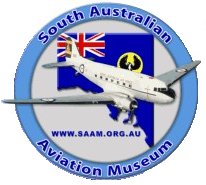
The South Australian Aviation Museum, located in Port Adelaide, South Australia, is an aviation museum which displays aircraft, aircraft engines, and rockets of relevance to South Australia, and the history of aviation and the aerospace industry in Australia.
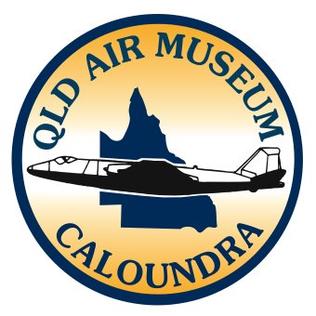
The Queensland Air Museum is a not-for-profit community-owned aviation museum located at Caloundra Airport in Queensland, Australia. Its mission is to collect and preserve all aspects of aviation heritage with an emphasis on Australia and Queensland. The museum has the largest collection of historical aircraft in Queensland and it also has a large collection of aircraft engines, equipment, artefacts, photographs and books.

Fighter World is an Australian not-for-profit aviation heritage centre at RAAF Base Williamtown, north of Newcastle, New South Wales. It is part of RAAF Aviation and Heritage and is operated with the purpose of preserving the history of fighter operations of the RAAF. The museum's collection are predominantly fighter aircraft once operated by the RAAF. Included in the collection are historically significant aircraft including de Havilland Vampire A79-1 and Dassault Mirage IIIO A3-3, both of which were the first aircraft of their type built in Australia.






















